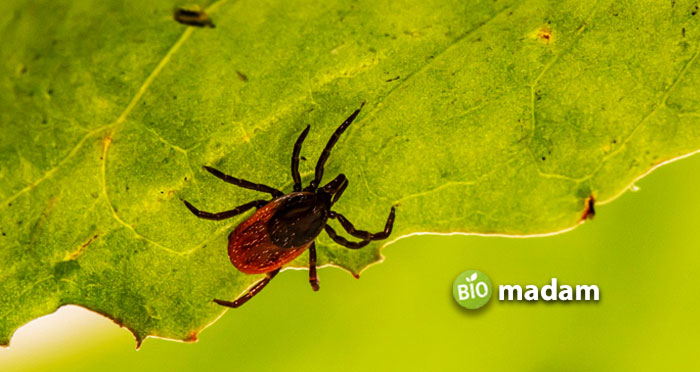Ticks are parasitic spiders that feed on the blood of mammals, birds, amphibians, or even a few reptiles to survive. Ticks flourish in warm, humid conditions, making Florida a perfect habitat for them.
When it comes to ticks in Florida, spring and fall are significant instances of the year. To survive, they are probably on your land as it provides them with the right conditions. There are numerous locations in which ticks may be discovered hiding, such as dense vegetation, excessive grasses, fence lines, alongside forested trails, and in wooded areas. It’s at this point that these parasites start to consume their host.
In most cases, ticks are brought to your home by animals including cats and dogs. The State of Florida, US is home to a wide variety of ticks, which includes a number of the most common:
Ixodes Scapularis (Black-legged tick)

There is a deer tick, likewise known as the black-legged tick. When it isn’t fed, its body color is generally dark brown or black. After a meal, its abdomen turns a light-gray or blue tint, making it seem bloated. Lyme disease is transmitted in most cases by deer ticks, which must eliminate as speedy as possible.
In Florida, the black-legged tick (sometimes known as the deer tick) is most commonly associated with Lyme disease transmission. Babesiosis and HGA also can be transmitted through black-legged ticks, which carry the disorder (human granulocytic anaplasmosis). From April to August, nymphs can be determined all over the world. Throughout the winter, adults are frequent (September via May).
Dermacentor variabilis (American dog tick)
They are known because of the timber tick or American dog tick. This species may be located in wooded environments, long grass, or locations with an excessive shrub or bush density. Although American dog ticks are most typically visible on dogs, they’ll also adhere to different species, including humans.
Unlike the brown tick, it’s also an outdoor tick and no longer has trouble in the home. This tick is capable of transmitting RMSF. Adults will adhere to human beings at the same time as nymphs feed on rats. Adults are ample from March to September.
When American dog ticks adhere to the base of the skull or the spinal column, they could purpose paralysis in dogs and children. A toxic discharge causes paralysis. Recovery usually takes place within 24 hours of the tick being removed.
Rhipicephalus Sanguineus (Brown dog tick)
For the entire duration of its life cycle, the Brown Dog Tick or Kennel Tick is a reddish-brown tick. Longer and without the decoration on its back, it is a unique tick. In retaining its name, this arachnid prefers to feed on dogs.

According to the Centers for Disease Control and Prevention (CDC), Rocky Mountain spotted fever (RMSF) may be transmitted through the brown dog tick throughout the southwest and close to the Mexican border.
Amblyomma Americanum (Lone star tick)
The mature varieties of the lone star tick feed primarily on white-tailed deer in woodland settings with dense underbrush. Star-shaped spots at the backs of adult female ticks are what give these ticks their common name. Lone stars are the most common and immediately visible human-biting ticks in Florida. The backside of the lady is marked with a light-colored dot.
Ehrlichiosis and the Southern Tick-Associated Rash Disease are carried and transmitted through lone big-name ticks (STARI). Nymphs appear between February and October; adults appear between April and August, July peaks.
Amblyomma Maculatum (Gulf coast tick)
There are numerous diseases and infections transmitted by the Gulf Coast tick that are commonly related to cattle. But it could additionally infect dogs and humans. You may observe this tick in abundance in the southeastern United States. It resembles the American canine tick in appearance. However, it has large mouthparts.
Rickettsia parkeri, a less severe RMSF cousin, is transmitted by ticks throughout the Gulf Coast tick. Newborn nymphs may be visible in the early spring (January to March), while adults may be determined from March to September. Adult ticks are often observed on the ears of massive mammals, along with cattle, and at the backs of sheep.

In Florida, When is tick season?
Dog owners in Florida have to continually search for ticks that have attached themselves to their pets’ pores and skin at all times of the year. On the other hand, spring and summer are peak tick bite seasons because newly hatched tick nymphs are on the prowl for unsuspecting hosts to feast on. Because nymphs are smaller and harder to identify than full-size, grownup ticks, that is a hazardous time of year for tick bites.
To position it every other way, tick season in Florida gives excellent dangers. As the tick nymphs are tougher to locate for your dog’s body, early tick bites detection is more challenging. Check your dog and cat regularly during tick season to verify that nymphs have now no longer attached themselves unintentionally.
Tick Preventive Measures
Quick identity and extermination of ticks facilitate saving you tick-borne disease since ticks want to consume for several hours to spread disease. A tick may be eliminated by grasping it through the mouthparts with tweezers and yanking it immediately out with solid pressure. To keep ticks and their pathogens at bay:
- Ticks must be eliminated from pets and humans as quickly as they are discovered.
- Make sure your clothes are nicely buttoned and tucked in, even if you are in tick-infested areas.
- Ticks may be extra visible on light-colored clothing.
- Apply repellents to any uncovered skin.
- In tick-infested areas, keep away from touching any plants.
- After an experience in a tick-infested area, test yourself for ticks.
- Tick tests must be carried out on a day-by-day basis if you stay in the woods.
- Clear brush from paths and locations where human beings often walk.
Summary
There are many bugs in Florida to be worried about. However, few have as much access to you and your family as ticks, especially when you have a pet. Ticks do now no longer enter your private home through the outside walls. They get upon your pets and own circle of relatives member. Once inside, they’ll infect everybody inside the residence with itchy, unsightly bites. Tick bites are not the most straightforward aspect to be worried about when it comes to ticks. They also can spread infections, some of which can cause long-time period illness and medical issues.

Jeannie has achieved her Master’s degree in science and technology and is further pursuing a Ph.D. She desires to provide you the validated knowledge about science, technology, and the environment through writing articles.

